2. Lawrence JH, Tobias CA, Born JL, McCombs RK, Roberts JE, Anger HO, et al. 1958; Pituitary irradiation with high-energy proton beams: a preliminary report. Cancer Res. 18:121–134. PMID:
13511365.
3. Castro JR, Linstadt DE, Bahary JP, Petti PL, Daftari I, Collier JM, et al. 1994; Experience in charged particle irradiation of tumors of the skull base: 1977-1992. Int J Radiat Oncol Biol Phys. 29:647–655. DOI:
10.1016/0360-3016(94)90550-9. PMID:
8040010.

4. Tsujii H, Mizoe JE, Kamada T, Baba M, Kato S, Kato H, et al. 2004; Overview of clinical experiences on carbon ion radiotherapy at NIRS. Radiother Oncol. 73 Suppl 2:S41–S49. DOI:
10.1016/S0167-8140(04)80012-4. PMID:
15971308.

6. Kamada T, Tsujii H, Blakely EA, Debus J, De Neve W, Durante M, et al. 2015; Carbon ion radiotherapy in Japan: an assessment of 20 years of clinical experience. Lancet Oncol. 16:e93–e100. DOI:
10.1016/S1470-2045(14)70412-7. PMID:
25638685.

7. Pommier P, Lievens Y, Feschet F, Borras JM, Baron MH, Shtiliyanova A, et al. 2010; Simulating demand for innovative radiotherapies: an illustrative model based on carbon ion and proton radiotherapy. Radiother Oncol. 96:243–249. DOI:
10.1016/j.radonc.2010.04.010. PMID:
20452693.

8. Combs SE, Ellerbrock M, Haberer T, Habermehl D, Hoess A, Jäkel O, et al. 2010; Heidelberg Ion Therapy Center (HIT): initial clinical experience in the first 80 patients. Acta Oncol. 49:1132–1140. DOI:
10.3109/0284186X.2010.498432. PMID:
20831505.

9. Kanai T, Endo M, Minohara S, Miyahara N, Koyama-ito H, Tomura H, et al. 1999; Biophysical characteristics of HIMAC clinical irradiation system for heavy-ion radiation therapy. Int J Radiat Oncol Biol Phys. 44:201–210. DOI:
10.1016/S0360-3016(98)00544-6. PMID:
10219815.

10. Torikoshi M, Minohara S, Kanematsu N, Komori M, Kanazawa M, Noda K, et al. 2007; Irradiation system for HIMAC. J Radiat Res. 48 Suppl A:A15–A25. DOI:
10.1269/jrr.48.A15. PMID:
17513897.

11. Minohara S, Kanai T, Endo M, Noda K, Kanazawa M. 2000; Respiratory gated irradiation system for heavy-ion radiotherapy. Int J Radiat Oncol Biol Phys. 47:1097–1103. DOI:
10.1016/S0360-3016(00)00524-1. PMID:
10863083.

12. Haberer T, Becher W, Schardt D, Kraft G. 1993; Magnetic scanning system for heavy ion therapy. Nucl Instrum Methods Phys Res Sect A. 330:296–305. DOI:
10.1016/0168-9002(93)91335-K.

13. Combs SE, Jäkel O, Haberer T, Debus J. 2010; Particle therapy at the Heidelberg Ion Therapy Center (HIT)- integrated research-driven university-hospital-based radiation oncology service in Heidelberg, Germany. Radiother Oncol. 95:41–44. DOI:
10.1016/j.radonc.2010.02.016. PMID:
20227124.
14. Linz U. 2012. Physical and biological rationale for using Ions in therapy. Ion beam therapy. Springer;Berlin, Heidelberg: DOI:
10.1007/978-3-642-21414-1_4.

16. Kraft G, Kraft-Weyrather W, Ritter S, Scholz M, Stanton J. 1989; Cellular and subcellular effect of heavy ions: a comparison of the induction of strand breaks and chromosomal aberration with the incidence of inactivation and mutation. Adv Space Res. 9:59–72. DOI:
10.1016/0273-1177(89)90423-7. PMID:
11537316.

17. Chu W, Ludewigt B, Renner T. 1993; Instrumentation for treatment of cancer using proton and light-ion beams. Rev Sci Instrum. 64:2055–2122. DOI:
10.1063/1.1143946.

18. Todd P. 1968; Fractionated heavy ion irradiation of cultured human cells. Radiat Res. 34:378–389. DOI:
10.2307/3572563. PMID:
5653430.

19. Kanai T, Kanematsu N, Minohara S, Komori M, Torikoshi M, Asakura H, et al. 2006; Commissioning of a conformal irradiation system for heavy-ion radiotherapy using a layer-stacking method. Med Phys. 33:2989–2997. DOI:
10.1118/1.2219771. PMID:
16964877.

20. Futami Y, Kanai T, Fujita M, Tomura H, Higashi A, Matsufuji N, et al. 1999; Broad-beam three-dimensional irradiation system for heavy-ion radiotherapy at HIMAC. Nucl Instrum Methods Phys Res Sect A. 430:143–153. DOI:
10.1016/S0168-9002(99)00194-1.

21. Kanematsu N, Endo M, Futami Y, Kanai T, Asakura H, Oka H, et al. 2002; Treatment planning for the layer-stacking irradiation system for three-dimensional conformal heavy-ion radiotherapy. Med Phys. 29:2823–2829. DOI:
10.1118/1.1521938. PMID:
12512716.

22. Eickhoff H, Bar R, Dolinskii A, Haberer T, Schlitt B, Spiller P, et al. HICAT- The German hospital-based light ion cancer therapy project. Paper presented at: Proceedings of the 2003 Particle Accelerator Conference. 2003 May 12-16; Portland, USA. p. 694–698.
23. Borloni E, Rossi S. The CNAO project and the status of the construction. Paper presented at: Proceedings of NIRS-CNAO Joint Symposium on Carbon Ion Radiotherapy. 2006 Nov 27-28; Milano, Italy.
24. Furukawa T, Inaniwa T, Sato S, Shirai T, Takei Y, Takeshita E, et al. 2010; Performance of the NIRS fast scanning system for heavy-ion radiotherapy. Med Phys. 37:5672–5682. DOI:
10.1118/1.3501313. PMID:
21158279.

25. Furukawa T, Inaniwa T, Sato S, Tomitani T, Minohara S, Noda K, et al. 2007; Design study of a raster scanning system for moving target irradiation in heavy-ion radiotherapy. Med Phys. 34:1085–1097. DOI:
10.1118/1.2558213. PMID:
17441254.

26. Inaniwa T, Furukawa T, Kanematsu N, Mori S, Mizushima K, Sato S, et al. 2012; Evaluation of hybrid depth scanning for carbon-ion radiotherapy. Med Phys. 39:2820–2825. DOI:
10.1118/1.4705357. PMID:
22559653.

27. Hara Y, Furukawa T, Mizushima K, Inaniwa T, Saotome N, Tansho R, et al. 2017; Commissioning of full energy scanning irradiation with carbon-ion beams ranging from 55.6 to 430 MeV/u at the NIRS-HIMAC. Nucl Instrum Methods Phys Res Sect B. 406:343–346. DOI:
10.1016/j.nimb.2017.02.052.

28. Furukawa T, Hara Y, Mizushima K, Saotome N, Tansho R, Saraya Y, et al. 2017; Development of NIRS pencil beam scanning system for carbon ion radiotherapy. Nucl Instrum Methods Phys Res Sect B. 406:361–367. DOI:
10.1016/j.nimb.2016.10.029.

31. Lyman JT, Howard J. 1977; Dosimetry and instrumentation for helium and heavy ions. Int J Radiat Oncol Biol Phys. 3:81–85. DOI:
10.1016/0360-3016(77)90231-0.

32. Phillips TL, Fu KK, Curtis SB. 1977; Tumor biology of helium and heavy ions. Int J Radiat Oncol Biol Phys. 3:109–113. DOI:
10.1016/0360-3016(77)90236-X. PMID:
96044.

33. Saunders W, Castro JR, Chen GT, Collier JM, Zink SR, Pitluck S, et al. 1985; Helium-ion radiation therapy at the Lawrence Berkeley Laboratory: recent results of a Northern California Oncology Group Clinical Trial. Radiat Res Suppl. 8:S227–S234. DOI:
10.2307/3583532. PMID:
3937171.

34. Kempe J, Gudowska I, Brahme A. 2007; Depth absorbed dose and LET distributions of therapeutic 1H, 4He, 7Li, and 12C beams. Med Phys. 34:183–192. DOI:
10.1118/1.2400621. PMID:
17278503.
35. Kantemiris I, Karaiskos P, Papagiannis P, Angelopoulos A. 2011; Dose and dose averaged LET comparison of 1H, 4He, 6Li, 8Be, 10B, 12C, 14N, and 16O ion beams forming a spread-out Bragg peak. Med Phys. 38:6585–6591. DOI:
10.1118/1.3662911. PMID:
22149840.

36. Tessonnier T, Marcelos T, Mairani A, Brons S, Parodi K. 2015; Phase space generation for proton and carbon ion beams for external users' applications at the Heidelberg Ion Therapy Center. Front Oncol. 5:297. DOI:
10.3389/fonc.2015.00297. PMID:
26793617.

37. Krämer M, Scifoni E, Schuy C, Rovituso M, Tinganelli W, Maier A, et al. 2016; Helium ions for radiotherapy? Physical and biological verifications of a novel treatment modality. Med Phys. 43:1995. DOI:
10.1118/1.4944593. PMID:
27036594.

38. Marafini M, Paramatti R, Pinci D, Battistoni G, Collamati F, De Lucia E, et al. 2017; Secondary radiation measurements for particle therapy applications: nuclear fragmentation produced by 4He ion beams in a PMMA target. Phys Med Biol. 62:1291–1309. DOI:
10.1088/1361-6560/aa5307. PMID:
28114124.
39. Tessonnier T, Mairani A, Brons S, Sala P, Cerutti F, Ferrari A, et al. 2017; Helium ions at the Heidelberg Ion Beam Therapy Center: comparisons between FLUKA Monte Carlo code predictions and dosimetric measurements. Phys Med Biol. 62:6784–6803. DOI:
10.1088/1361-6560/aa7b12. PMID:
28762335.

40. Tessonnier T, Mairani A, Brons S, Haberer T, Debus J, Parodi K. 2017; Experimental dosimetric comparison of 1H, 4He, 12C and 16O scanned ion beams. Phys Med Biol. 62:3958–3982. DOI:
10.1088/1361-6560/aa6516. PMID:
28406796.
41. Inaniwa T, Kanematsu N, Noda K, Kamada T. 2017; Treatment planning of intensity modulated composite particle therapy with dose and linear energy transfer optimization. Phys Med Biol. 62:5180–5197. DOI:
10.1088/1361-6560/aa68d7. PMID:
28333688.

42. Krämer M, Scifoni E, Schmitz F, Sokol O, Durante M. 2014; Overview of recent advances in treatment planning for ion beam radiotherapy. Eur Phys J D. 68:306. DOI:
10.1140/epjd/e2014-40843-x.

43. Kopp B, Mein S, Dokic I, Harrabi S, Böhlen TT, Haberer T, et al. 2020; Development and validation of single field multi-ion particle therapy treatments. Int J Radiat Oncol Biol Phys. 106:194–205. DOI:
10.1016/j.ijrobp.2019.10.008. PMID:
31610250.

44. Inaniwa T, Kanematsu N, Matsufuji N, Kanai T, Shirai T, Noda K, et al. 2015; Reformulation of a clinical-dose system for carbon-ion radiotherapy treatment planning at the National Institute of Radiological Sciences, Japan. Phys Med Biol. 60:3271–3286. DOI:
10.1088/0031-9155/60/8/3271. PMID:
25826534.

45. Inaniwa T, Suzuki M, Hyun Lee S, Mizushima K, Iwata Y, Kanematsu N, et al. 2020; Experimental validation of stochastic microdosimetric kinetic model for multi-ion therapy treatment planning with helium-, carbon-, oxygen-, and neon-ion beams. Phys Med Biol. 65:045005. DOI:
10.1088/1361-6560/ab6eba. PMID:
31968318.

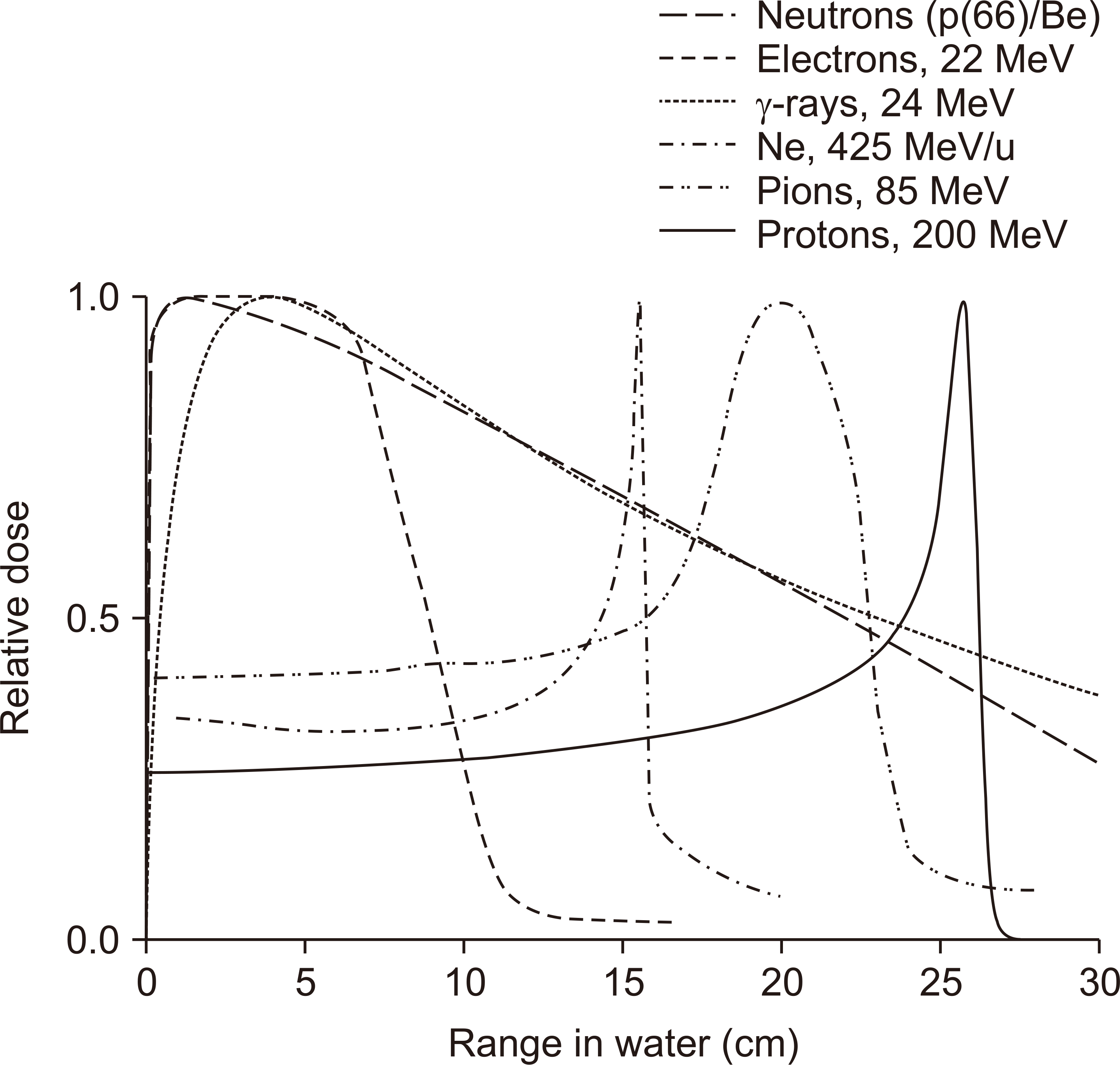
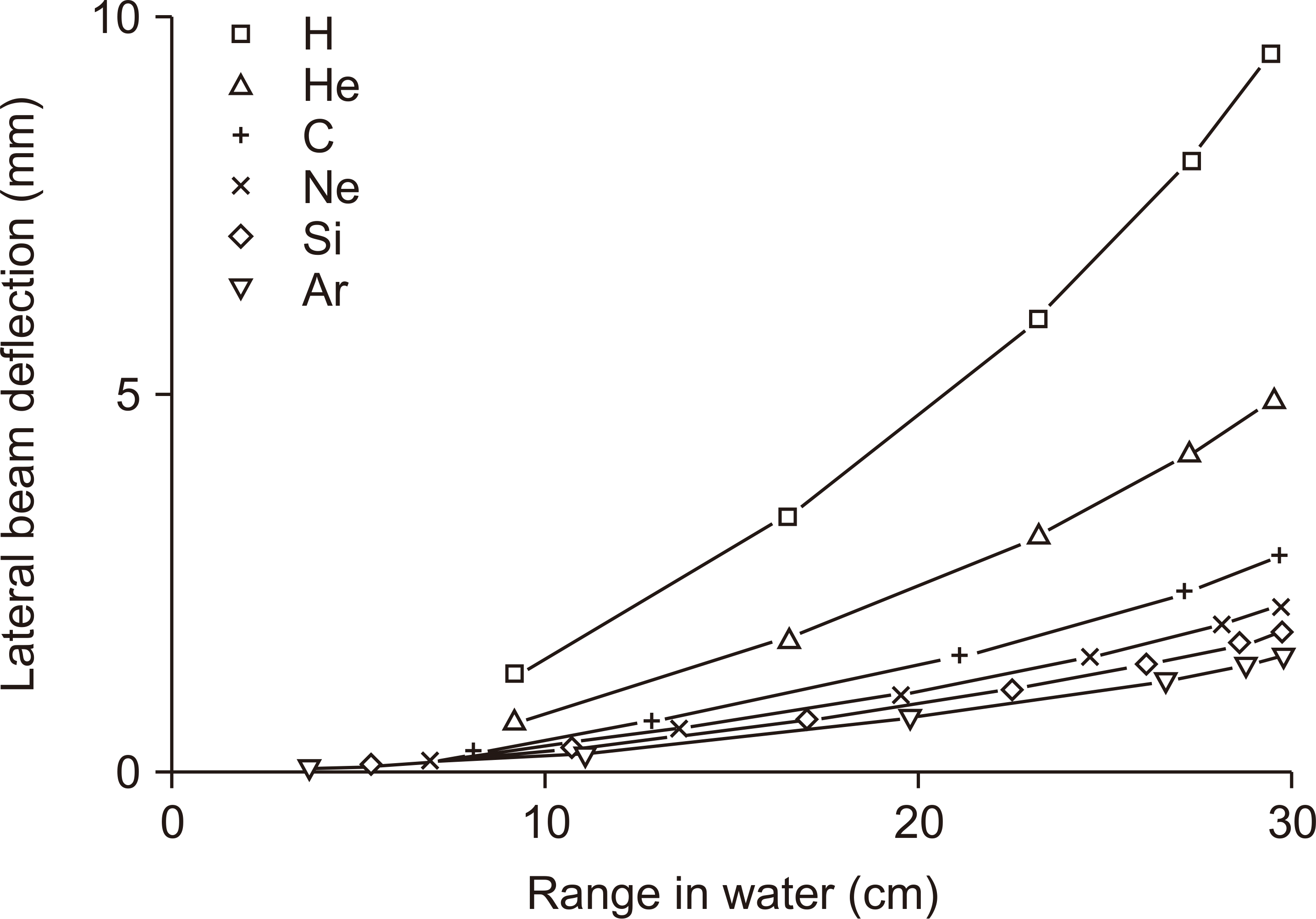
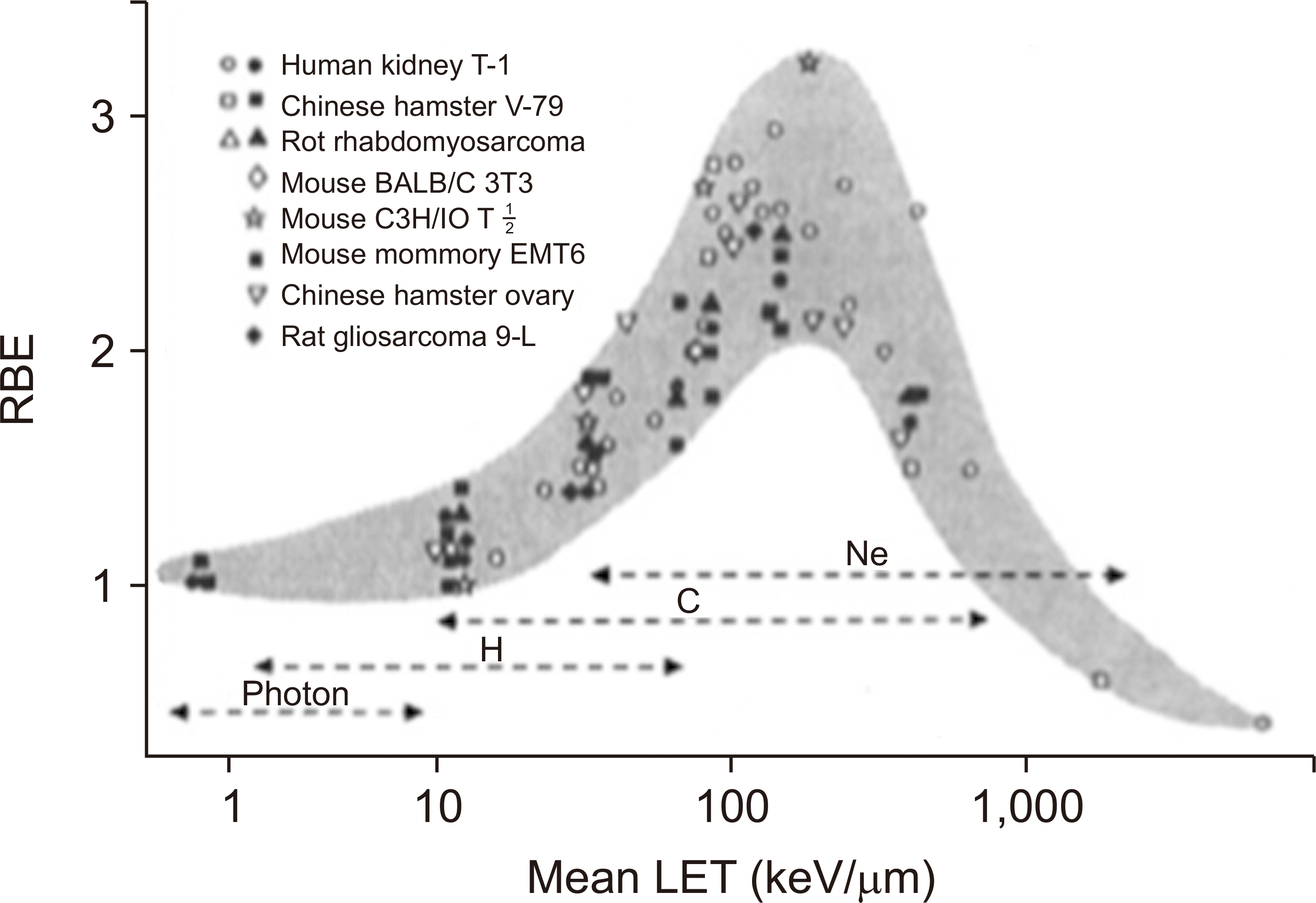
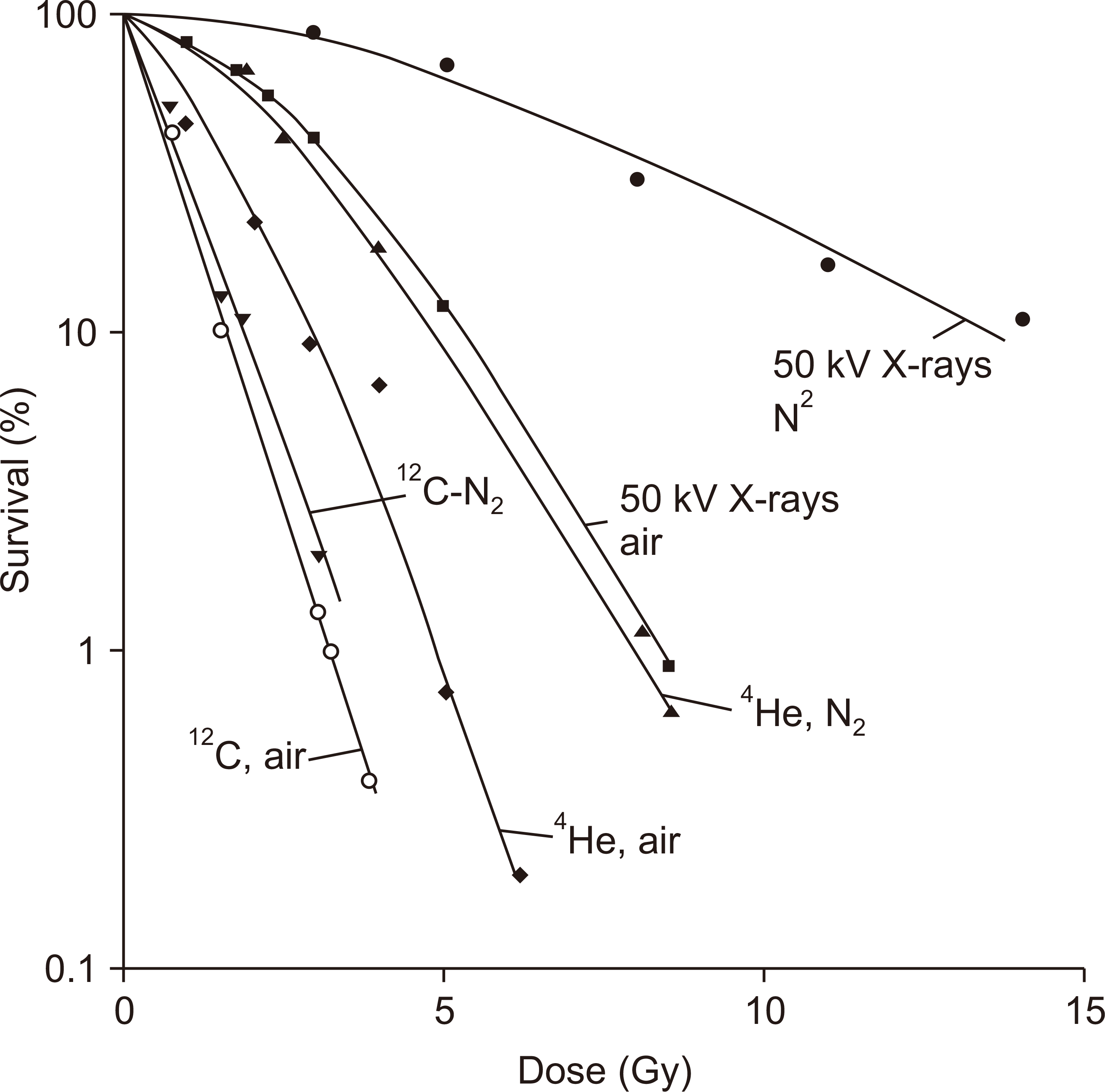
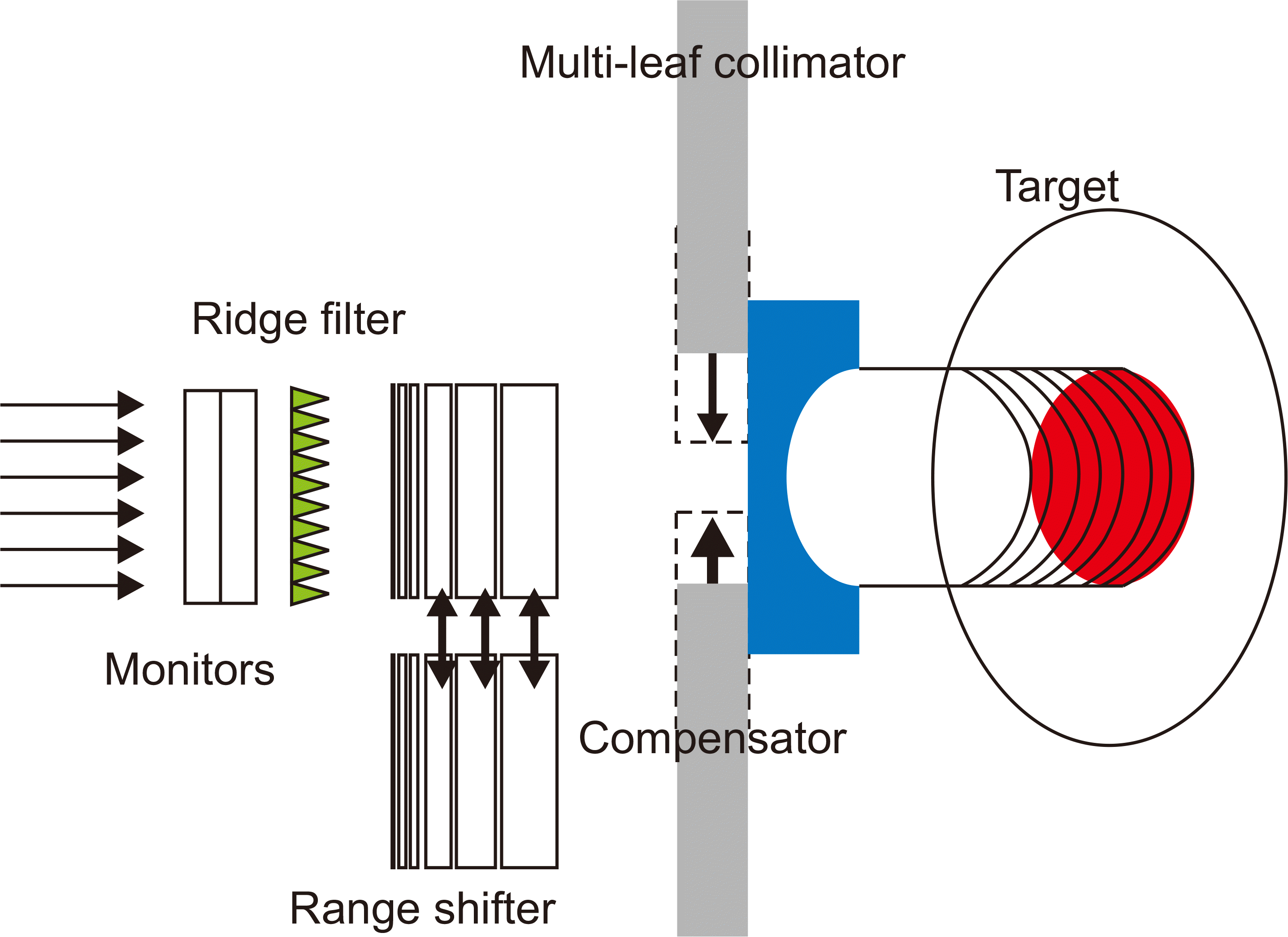




 PDF
PDF Citation
Citation Print
Print



 XML Download
XML Download